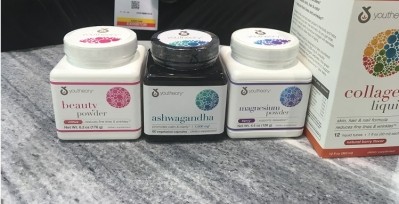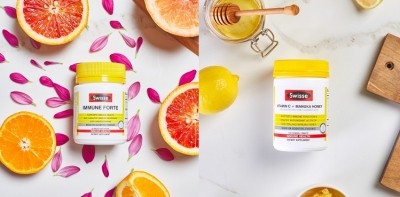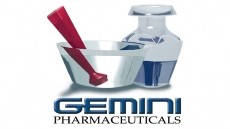2019 Trends: The ingredients and categories to watch this year

1. Sleep
It has been described as the third pillar of health, and consumer interest in sleep products is on the rise. Surveys regularly show that “insomnia” is a top five ranking health issue for many Americans.
This has led to rapid growth in the sleep aid category, which is reported to be growing at almost 30% year-on-year and was predicted to hit $732 million last year, according to Euromonitor International.
The OTC side of the category dominates, with P&G’s ZzzQuil brand looming large, but market research data have repeatedly shown consumers would prefer a “natural” alternative to OTC products. Indeed, P&G/ Vicks launched a dietary supplement under the ZzzQuil brand in the spring of 2018 (gummies formulated with melatonin, lavender, chamomile, valerian root and lemon balm).
At Expo West last year we saw brands like TwinLab launch products into this space. Expect more this year.
2. Curcumin, curcumin, curcumin
Turmeric / curcumin was the #1 selling herbal supplement in 2017 in the Natural Channel: $50 million in sales, growth of 12% y-o-y, according to the most recent ABC Herbalgram Herb Market Report. In the mainstream mass channel, turmeric / curcumin comes in at #5 with sales of $32.5 million, and mouth-watering growth of 47%.
In addition, data from the 2018 CRN Consumer Survey on Dietary Supplements revealed that almost 20% of US supplement users over 55 are using turmeric and curcumin supplements.
The science continues to deepen and broaden and should keep the bright yellow ingredient firmly in the headlines and front of mind for many consumers. Curcumin will continue to go from strength-to-strength.
3. Prebiotics (that’s right, with an ‘e’)
Finally emerging from the shadow of the beneficial bugs, 2019 could be the year of prebiotics: Defined as “a substrate that is selectively utilized by host microorganisms conferring a health benefit” (ISAPP, published in Nature Reviews Gastroenterology & Hepatology, 2017, Vol 14, pp. 491–502)
There will continue to be some consumer confusion around differences between prebiotics and probiotics, but we’ve already started to see the term ‘prebiotic’ appearing on mass food products, such as Kellogg’s Happy Inside brand, and we fully anticipate more messaging around prebiotics on product labels in 2019.
4. Probiotics
Those beneficial microorganisms are the fastest growing category of dietary supplements, according to Euromonitor, and we expect that to continue in 2019 as multiple new clinical trials are finished and their results published supporting a role for probiotics for digestive health, immune support, women’s health, cardiovascular health, weight management, athletic performance, mood and wellbeing, cognitive function, skin health, and on and on.
What is clear is that stakeholders must ensure that claims stay rooted in science and not hype. There are some valid concerns out there—there are players who will push the envelope on acceptable claims, and formulators who may not be making label claim—but what is sure is that as the category grows, scrutiny will increase, be it from industry critics or the mainstream or popular science publications.
Industry and academic collaborators need to be ever more vigilant and serious, but there is no reason why the explosive growth cannot continue.
5. Beauty-from-within
2017 was the breakout year for collagen, going from zero to everywhere at Expo West. 2018 picked up where 2017 left off, and 2019, we think, will see it continue. The science around collagen has been growing well, and the ingredient dominates the beauty-from-within category and is turning up in sports nutrition products (with skin health claims), and even in Japanese beer (see image below).
After a couple of false dawns over the years, it looks like beauty-from-within products are finally here to stay. Success also seems to be linked to better packaging (making them look like cosmetics), retailers positioning them in stores near cosmetics products, or beauty retailers like Sephora offering supplements.
We’ve even had Avon enter the supplements space with a range of beauty-from-within products (among other things).
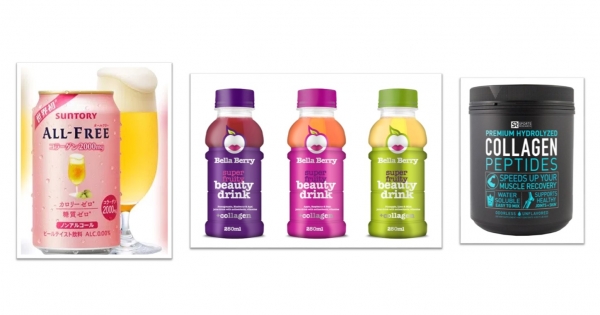
6. Nootropics
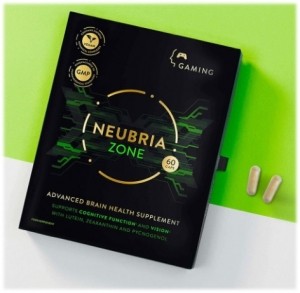
The brain-boosting ingredients, which include the likes of citicoline (Cognizin), Bacopa monnieri, phosphatidylserine, Rhodiola rosea, Ginkgo biloba, spearmint extract (Neumentix), omega-3s, B-vitamins, magnesium L-threonate (Magtein), Inositol-stabilized arginine silicate (Nitrosigine), theacrine (Teacrine), and on and on, have been attracting more and more attention, and not just from the college students cramming for finals or seniors.
Interest in nootropics is now coming from athletes (better decision making) to regular people at the office (focus).
There is also the rise of e-Sports (professional video gaming) to consider. Long dominated by caffeine-rich energy beverages, some brands are specifically targeting the e-Sports community, which Sports Illustrated pegs at around 148 million “esports enthusiasts” around the globe.
7. Adaptogens
They’ve been gaining momentum in the dietary supplement and tea categories for several years, but we’re now starting to see these in beverages (albeit niche). As consumers learn of the potential of these ingredients for stress management and energy, we expect ingredients like Ashwagandha, Rhodiola, and Schisandra to continue to gain traction.
We expect more talk of adaptogens both in the mainstream media and on product labels in 2019.
But a word of caution – there appears to be widespread confusion around what qualifies as an adaptogen – with a real opportunity for education initiatives.
8. Sports Nutrition
This could be a discussion of protein, which still dominates the category, but let’s look at the wider category. There are still concerns around some formulations and ingredients, and the “fringes” continue to search for the next DMAA/DMBA/aegeline/dendrobium, etc, but it’s the general mainstreaming of the category, and the segmentation that is fascinating to watch.
Yes, the big tubs are still there, but we’re now seeing products specifically targeting everyone from female yoga enthusiasts to teen team athletes. We have NFL quarterbacks advertising protein-rich yogurt and protein tubs formulated with collagen and making skin health claims. Layer on to this the rise of personalization and the potential opportunities presented by the microbiome and sports nutrition will continue to go from strength to strength.
And if you’re interested, there is still time to register for the inaugural NutraIngredients-USA Sports Nutrition Summit in San Diego, January 23-24. For more information and to register, please click HERE.
9. HMOs for infants
It may be niche, but a lot of serious companies are launching HMO ingredients. Human milk oligosaccharides, or HMOs, form a significant portion of human breast milk (about 12%) but they are not easily digested. Experts postulate that their purpose is to jump-start the infant’s microbiome (ie. they’re prebiotics).
Players actively investigating HMOs include DuPont, Friesland Campina, Glycom A/S, Evolve Bioscience, Abbott, and Nestlé.
The majority of the focus to-date has been on 2´-fucosyllactose (2’-FL) because it’s the most abundant HMO in human milk, but lacto-N-neotetraose (LNnT) is also commercially available. We expect to see more HMOs coming to the market in the next 12-18 months.
10. Mitochondrial function
It is already well-known in scientific circles that the mitochondrial function declines with age, while aging itself is a known risk factor for a number of common age-related and neurodegenerative disorders. This led researchers to propose that secondary mitochondrial dysfunction may lead to degenerative diseases.
A role for oxidative stress has been proposed to promote mitochondrial dysfunction, leading researchers to examine if antioxidants such as CoQ10, PQQ, astaxanthin, and vitamins C and E may play a role.
Other nutrients and compounds being investigated for their potential ability to enhance mitochondrial function include resveratrol and nicotinamide riboside, a form of vitamin B3.
And, channeling Spinal Tap, going to 11 on a Top 10 list, leaves us with…
CBD
Some people call it controversial and they say that the regulatory landscape is all shades of grey. From our viewpoint, it’s not. It’s black and white: CBD is illegal as an ingredient in food, beverages, and supplements. The shades of grey have been added by the absence of any serious enforcement action by the FDA, which has emboldened companies to dip their toe in the proverbial waters.
Up until now, there have been a couple of dozen warning letters that come across as more "bark than bite”, and the FDA has not done much beyond jabbing its fingers forcefully on the page in the law book where it says CBD is not allowed in these products.
But could 2019 be the year that we finally have some solid FDA action on CBD? The Hemp Farming Act, passed as part of the 2018 Farm Bill, removes one hurdle (the DEA angle), but the FDA and its exclusion principle still exists. In December, FDA Commissioner Gottlieb issued this very important statement: “While products containing cannabis and cannabis-derived compounds remain subject to the FDA’s authorities and requirements, there are pathways available for those who seek to lawfully introduce these products into interstate commerce. The FDA will continue to take steps to make the pathways for the lawful marketing of these products more efficient.
“… In addition, pathways remain available for the FDA to consider whether there are circumstances in which certain cannabis-derived compounds might be permitted in a food or dietary supplement. Although such products are generally prohibited to be introduced in interstate commerce, the FDA has authority to issue a regulation allowing the use of a pharmaceutical ingredient in a food or dietary supplement. We are taking new steps to evaluate whether we should pursue such a process.”
If FDA does indeed permit CBD for use in food and supplements (would an NDI or GRAS notification be needed first?) then it really is game on. Then we just need to really build the science and figure out what benefit claims can be made that are legitimate structure-function claims!







